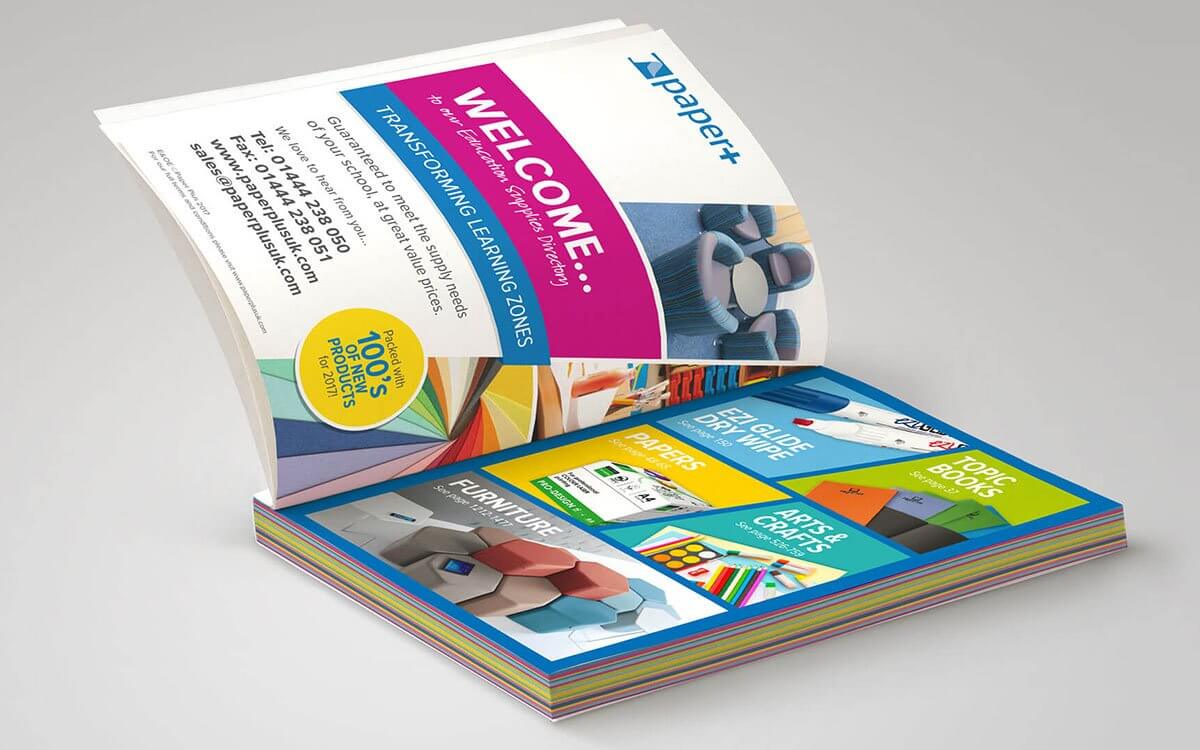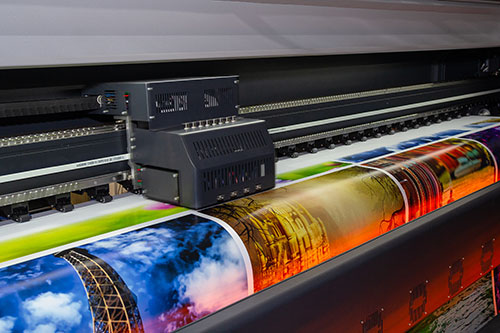The Important Overview to Recognizing Litho Printing and Its Applications
Litho printing stands as a considerable method in the printing sector, rooted in the principles of oil and water repulsion. This method not only delivers high-grade photos however also satisfies different business needs. Its applications vary from advertising and marketing products to packaging, showcasing its adaptability. As the sector adapts to new technologies, the evolution of litho printing questions about its future and relevance in a digital landscape. What exists ahead for this enduring method?

What Is Litho Printing?
Litho printing, an extensively used printing strategy, counts on the principle of oil and water repulsion. This approach utilizes a flat printing surface, commonly a metal plate, which is dealt with to assure that the picture locations are responsive to oil-based inks while the non-image locations repel them. The procedure begins with the development of a picture on the plate, commonly with drawing or photographic ways. When the photo is prepared, the plate is moistened with water, complied with by the application of ink. The ink adheres just to the picture locations, permitting accurate reproduction of graphics and message. Litho printing is preferred for its ability to produce top quality prints with great detail and lively shades. It is generally made use of in business applications, consisting of newspapers, magazines, and packaging, showcasing its flexibility and efficiency in fulfilling the needs of modern-day printing.
The Background of Lithography
Although lithography is a modern-day printing staple, its origins map back to the late 18th century when German playwright Alois Senefelder designed the strategy in 1796. Initially established as an approach for duplicating messages and photos, lithography utilized a level stone surface to develop prints via a chemical procedure. Senefelder's technology enabled better flexibility and creative expression contrasted to previous printing methods.By the 19th century, lithography obtained widespread approval, becoming a prominent choice amongst musicians and publishers. It enabled the mass manufacturing of illustrations, maps, and posters, especially affecting the printing market. The strategy additionally advanced with the intro of lithographic presses, improving performance and quality.As the industrial revolution advanced, lithography adapted to meet the needs of industrial printing, paving the means for contemporary applications. Today, it remains a vital method in various markets, including publishing, packaging, and art recreation.
Exactly How Litho Printing Works
A crucial feature of litho printing is its dependence on the concept of oil and water repulsion - litho printing. In this process, photos are transferred from a level surface, normally a metal or polymer plate, to paper. The plate is dealt with so that the locations meant for printing attract ink, while the non-image areas repel it because of their fondness for water. The printing starts by dampening home plate with water, which complies with the non-image locations. Subsequently, an oil-based ink is used, sticking just to the designated picture areas.When the plate comes right into call with the substrate, the ink is transferred, producing a print. The litho printing procedure can creating high-grade pictures with great detail. It is commonly used for automation due to its performance and consistency, making it a recommended method for commercial printing applications
Advantages of Litho Printing
One significant benefit of litho printing is its capability to create top notch pictures regularly, making it an optimal option for business tasks. This printing technique utilizes a level printing plate, guaranteeing even ink circulation and sharp details. Litho printing is additionally renowned for its color accuracy, allowing vibrant and true-to-life recreations, which is vital for branding materials.Moreover, it supports a wide array of substratums, including paper, cardboard, and also specific plastics, boosting its flexibility. The process is cost-efficient for huge runs, as economic situations of range minimize per-unit prices. In enhancement, litho printing has a fast turn-around time, enabling reliable manufacturing schedules.Its durability likewise indicates that published materials withstand fading, making sure that the final item maintains its aesthetic appeal with time. Overall, these advantages make litho printing a favored option throughout various sectors, adding to its enduring appeal.
Applications of Litho Printing in Company
As businesses increasingly seek dependable and top notch printing solutions, litho printing arises as a crucial player in numerous applications. This strategy is particularly favored for producing advertising and marketing products such as sales brochures, flyers, and directories, many thanks to its capability to supply vibrant colors and sharp images. In addition, litho printing is often used for product packaging services, enabling business to create captivating labels and boxes that enhance product appeal.In the market of company identification, litho printing contributes in creating professional stationery, company cards, and marketing goods, which aid strengthen brand recognition. Furthermore, it is extensively utilized in the posting market for published products such as publications and magazines, where constant top quality is paramount. Overall, litho printing's versatility and efficiency make it a crucial tool for organizations intending click to read more to connect properly and establish a strong market presence.
Artistic Utilizes of Litho Printing
Litho printing offers as a functional medium in the domain of printmaking, offering musicians a special approach to express their creativity. This method permits a wide variety of artistic applications, from conventional prints to contemporary analyses. By exploring the subtleties of litho printing, musicians can harness its distinct qualities to enhance their job.

Printmaking Methods Introduction
The creativity of printmaking incorporates a varied array of methods, with litho printing standing apart for its unique technique to photo production. This approach depends on the principle of oil and water repulsion, enabling musicians to attract straight onto a sedimentary rock or steel plate with an oily medium. Once prepared, home plate is moistened and tattooed, moving the photo onto paper with stress. Litho printing is celebrated for its capacity to produce great details and abundant tonal variations, making it a preferred choice amongst artists. In addition, the why not look here process is versatile, accommodating both standard strategies and modern-day adaptations. This adaptability permits litho printing to bridge numerous imaginative designs, improving the printmaking landscape with its unique characteristics and capacities.
Special Artistic Applications
Checking out the distinct creative applications of litho printing reveals its exceptional convenience in different innovative fields. Artists make use of litho printing to produce complex styles and appearances, enabling for meaningful and detailed works. The procedure facilitates the reproduction of vivid colors, making it suitable for illustrations and great art prints. Many contemporary musicians embrace lithography for its capacity to integrate standard techniques with contemporary principles, leading to cutting-edge art work. Furthermore, litho printing is frequently utilized in the production of limited edition prints, improving their value and charm. The responsive quality of litho prints adds an unique measurement, drawing in collection agencies and art lovers alike. Overall, litho printing continues to be a significant medium for creative expression, bridging timeless methods with modern imagination.
The Future of Litho Printing in a Digital World
As the printing market develops, litho printing faces the obstacle of incorporating digital modern technologies to continue to be pertinent. Methods concentrated on digital combination, alongside fads in sustainability and technology, will shape its future - litho printing. Understanding these dynamics is important for industry stakeholders wanting to adapt to a rapidly transforming landscape
Digital Assimilation Methods
A growing variety of litho printing firms are welcoming electronic combination techniques to stay affordable in a significantly digital landscape. By including digital operations, these firms can simplify procedures and improve efficiency. This integration enables real-time data monitoring and boosted interaction between departments, reducing turn-around times substantially. Furthermore, electronic tools enable much better modification and personalization of published materials, accommodating specific customer needs. Companies are likewise embracing crossbreed printing remedies that combine conventional litho methods with digital technologies, providing adaptability in manufacturing. Leveraging data More about the author analytics helps in comprehending market trends and client preferences, permitting organizations to make informed choices. On the whole, electronic combination is ending up being vital for litho printing business aiming to innovate and react to advancing market requirements.
Sustainability and Innovation Trends

Frequently Asked Inquiries
What Products Are Generally Used in Litho Printing?
The products typically made use of in litho printing include light weight aluminum plates, ink, water, and paper. Each element plays a crucial function in the printing process, ensuring high-grade image recreation and efficient transfer of ink onto the substrate.
How Does Litho Printing Compare to Digital Printing?
Litho printing supplies superior shade uniformity and quality for big runs, while electronic printing masters brief runs and modification. Each method has unique benefits, accommodating different demands based upon manufacturing range and cost-efficiency.
What Is the Regular Turnaround Time for Litho Printing Projects?
The normal turnaround time for litho printing jobs varies, typically ranging from a couple of days to several weeks. Elements affecting this timeframe consist of task intricacy, quantity, and required completing processes, influencing overall manufacturing routines.
Can Litho Printing Accommodate Customized Sizes and Formats?
Litho printing can indeed fit custom sizes and formats, enabling adaptability in design. This versatility enables clients to attain unique print results tailored to their particular demands, improving the overall efficiency of their projects.
What Are the Ecological Impacts of Litho Printing?
The environmental impacts of litho printing consist of source intake, chemical use, and waste generation. However, developments in sustainable techniques and environmentally friendly materials are progressively decreasing these unfavorable effects, advertising an extra ecologically accountable strategy to printing.